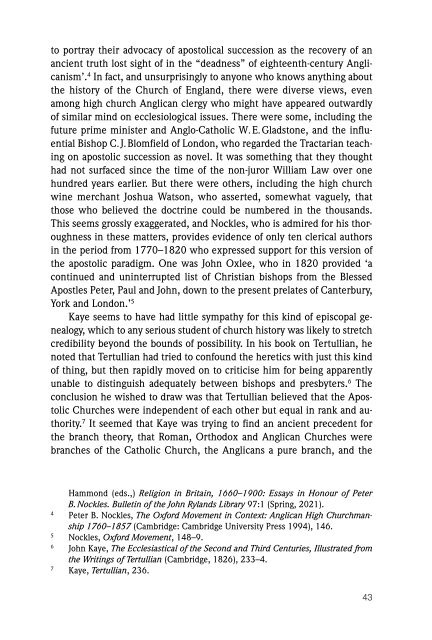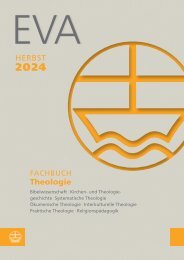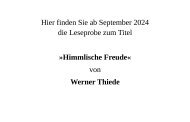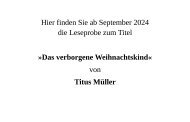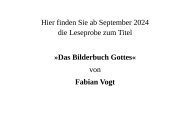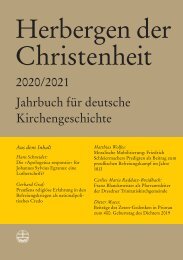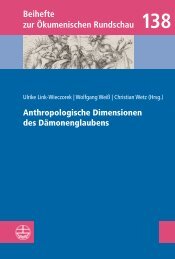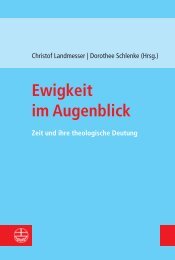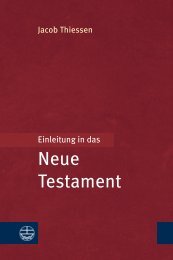Mark Chapman | Matthias Grebe | Friederike Nüssel | Frank-Dieter Fischbach (Eds.): Towards Interchangeability (Leseprobe)
This book examines how the practice of episcopacy in the Church of England and the EKD affects the claim that the ‘historic episcopate’ is a necessary condition for ‘the full interchangeability of ministers’. It addresses four questions relating to the practice of oversight: How have different forms of oversight sought to maintain the apostolic ‘historic’ faith in history and today? How does the exercise of authority within contemporary societies relate to the pre-modern ideas expressed in the idea of historic episcopate? How has the practice of oversight changed in the light of demographic changes and declining levels of church membership? What are the implications of synodical government and shared oversight for the concept of ‘historic episcopate’? The book’s goal is to explore whether an interdisciplinary analysis of episcopacy can assist the churches in establishing a new understanding of the “historic episcopate”.
This book examines how the practice of episcopacy in the Church of England and the EKD affects the claim that the ‘historic episcopate’ is a necessary condition for ‘the full interchangeability of ministers’. It addresses four questions relating to the practice of oversight: How have different forms of oversight sought to maintain the apostolic ‘historic’ faith in history and today? How does the exercise of authority within contemporary societies relate to the pre-modern ideas expressed in the idea of historic episcopate? How has the practice of oversight changed in the light of demographic changes and declining levels of church membership? What are the implications of synodical government and shared oversight for the concept of ‘historic episcopate’?
The book’s goal is to explore whether an interdisciplinary analysis of episcopacy can assist the churches in establishing a new understanding of the “historic episcopate”.
Create successful ePaper yourself
Turn your PDF publications into a flip-book with our unique Google optimized e-Paper software.
to portray their advocacy of apostolical succession as the recovery of an<br />
ancient truth lost sight of in the “deadness” of eighteenth-century Anglicanism’.<br />
4 In fact, and unsurprisingly to anyone who knows anything about<br />
the history of the Church of England, there were diverse views, even<br />
among high church Anglican clergy who might have appeared outwardly<br />
of similar mind on ecclesiological issues. There were some, including the<br />
future prime minister and Anglo-Catholic W. E. Gladstone, and the influential<br />
Bishop C. J. Blomfield of London, who regarded the Tractarian teaching<br />
on apostolic succession as novel. It was something that they thought<br />
had not surfaced since the time of the non-juror William Law over one<br />
hundred years earlier. But there were others, including the high church<br />
wine merchant Joshua Watson, who asserted, somewhat vaguely, that<br />
those who believed the doctrine could be numbered in the thousands.<br />
This seems grossly exaggerated, and Nockles, who is admired for his thoroughness<br />
in these matters, provides evidence of only ten clerical authors<br />
in the period from 1770–1820 who expressed support for this version of<br />
the apostolic paradigm. One was John Oxlee, who in 1820 provided ‘a<br />
continued and uninterrupted list of Christian bishops from the Blessed<br />
Apostles Peter, Paul and John, down to the present prelates of Canterbury,<br />
York and London.’ 5<br />
Kaye seems to have had little sympathy for this kind of episcopal genealogy,<br />
which to any serious student of church history was likely to stretch<br />
credibility beyond the bounds of possibility. In his book on Tertullian, he<br />
noted that Tertullian had tried to confound the heretics with just this kind<br />
of thing, but then rapidly moved on to criticise him for being apparently<br />
unable to distinguish adequately between bishops and presbyters. 6 The<br />
conclusion he wished to draw was that Tertullian believed that the Apostolic<br />
Churches were independent of each other but equal in rank and authority.<br />
7 It seemed that Kaye was trying to find an ancient precedent for<br />
the branch theory, that Roman, Orthodox and Anglican Churches were<br />
branches of the Catholic Church, the Anglicans a pure branch, and the<br />
Hammond (eds.,) Religion in Britain, 1660–1900: Essays in Honour of Peter<br />
B. Nockles. Bulletin of the John Rylands Library 97:1 (Spring, 2021).<br />
4<br />
Peter B. Nockles, The Oxford Movement in Context: Anglican High Churchmanship<br />
1760–1857 (Cambridge: Cambridge University Press 1994), 146.<br />
5<br />
Nockles, Oxford Movement, 148–9.<br />
6<br />
John Kaye, The Ecclesiastical of the Second and Third Centuries, Illustrated from<br />
the Writings of Tertullian (Cambridge, 1826), 233–4.<br />
7<br />
Kaye, Tertullian, 236.<br />
43


